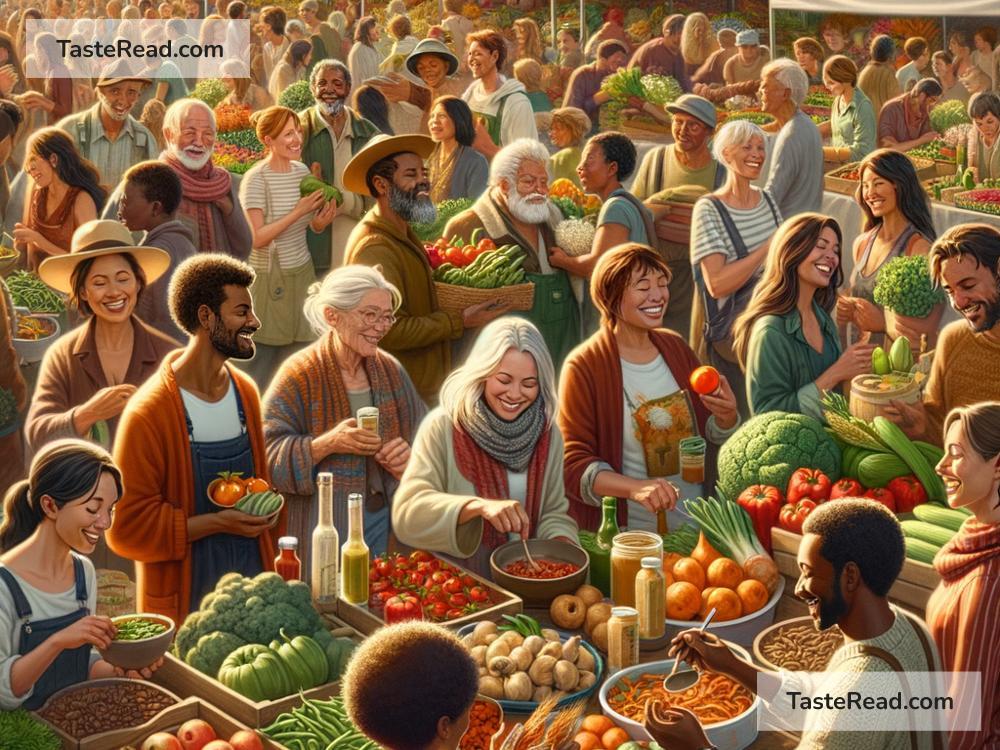The Future of Food and Cultural Sustainability
Food is more than just what fills our stomachs; it’s a connection to culture, history, and identity. Every dish tells a story. It speaks of the land it comes from, the people who prepare it, and the traditions passed down through generations. But as the world changes—with advances in technology, shifting climates, and globalization—we must ask: What does the future of food look like? And how can we sustain our cultural identities through it all?
The Changing World of Food
In recent years, the way we produce, eat, and think about food has shifted. Scientists are creating lab-grown meat, plant-based alternatives, and farming techniques that use less water. These innovations might seem futuristic, but they’re becoming more common. They are solutions to growing concerns about how we feed the world’s population while protecting the planet.
Climate change also plays a big role in shaping the future of food. Rising temperatures, unpredictable weather, and loss of biodiversity affect how crops grow. For example, staple foods like rice and wheat might become harder to produce in some regions. Many farmers are already struggling to adapt to these challenges, leaving communities vulnerable to hunger.
At the same time, globalization has made food more accessible. Nowadays, you can eat sushi in South America or enjoy curry in Europe. While this exchange of cuisines is exciting, it also comes with a cost. Many traditional dishes and farming practices are disappearing because fewer people know how to prepare them or grow the ingredients locally.
Why Cultural Sustainability Matters
Cultural sustainability means keeping traditions alive while adapting to change. Food is one of the most important parts of cultural sustainability because it is tied to heritage. For example, Indigenous peoples often honor their land through specific farming methods and rituals that have been practiced for centuries. These traditions do not just preserve identity—they also teach us to live in harmony with nature.
When food traditions disappear, we lose knowledge about how people have survived and thrived in various environments. We also lose our sense of belonging. Food connects us to our ancestors, our communities, and even our future. Imagine a world where diversity in cuisine fades, replaced by mass-produced and standardized meals. It would be a loss not just for flavor, but for humanity itself.
Balancing Innovation and Tradition
So, how can we embrace food innovations while protecting cultural sustainability? The key is to strike a balance.
First, we need to value and support traditional farming methods. Practices like permaculture, crop rotation, and Indigenous knowledge systems are often better for the environment. They rely on biodiversity and natural cycles, rather than harmful chemicals or over-exploitation. Governments and communities should work together to protect farmers who carry these traditions forward.
Second, education is essential. Young people should learn about their own food heritage and also be exposed to the diversity of global cuisines. This doesn’t just mean learning to cook, but understanding where ingredients come from and why they are important. Schools, families, and communities can play a role in preserving cultural recipes and stories.
Third, technology can help without replacing tradition. For example, AI tools can be used to map and preserve recipes from cultures around the world. Drones can assist farmers with monitoring crops, reducing waste, and promoting sustainable practices. Lab-grown foods can provide alternative protein sources without large-scale environmental damage—but they should complement, not replace, culturally significant foods.
Local Food, Global Impact
One of the biggest ways we can support cultural sustainability is by thinking locally. Buying food from local farmers and markets helps small-scale producers survive. These producers often grow heritage crops or native plants that are essential to sustaining biodiversity and cultural identity. Eating local foods also reduces the carbon footprint of transporting ingredients across the globe.
Community-supported agriculture (CSA) programs are a great example. In CSA programs, consumers invest in a farm by purchasing a subscription. This allows farmers to grow food based on demand without risking overproduction. It also creates stronger ties between farmers and consumers, helping people feel connected to their food and the land it comes from.
The Role of Food Tourism
Food tourism is another way to preserve cultural sustainability. Traveling to experience food in its original context can create appreciation for unique traditions. For instance, visiting Italy to taste handmade pasta or Ethiopia to experience an authentic coffee ceremony introduces people to the rich history behind such traditions. However, food tourism must be done responsibly. It should focus on supporting local communities rather than exploiting them for profit.
Moving Forward Together
The future of food does not have to come at the expense of culture. Innovations are important—they help us solve big problems like climate change and food security—but we must never forget the value of tradition. Cultural sustainability ensures that the stories of our ancestors, the wisdom of local farmers, and the flavors of vibrant communities continue to thrive.
As individuals, we have a powerful role to play. We can support local farmers, respect heritage crops, cook traditional recipes, and educate ourselves about the origins of the food we eat. By doing this, we help create a future where innovation and tradition coexist—where food continues to nourish not just our bodies, but our identities.
Food is a part of who we are, and it’s worth protecting. With care, creativity, and collaboration, we can build a future that celebrates both the new and the old. The next generation deserves to inherit not just a world that has enough food, but one that is rich in culture, history, and diversity.


